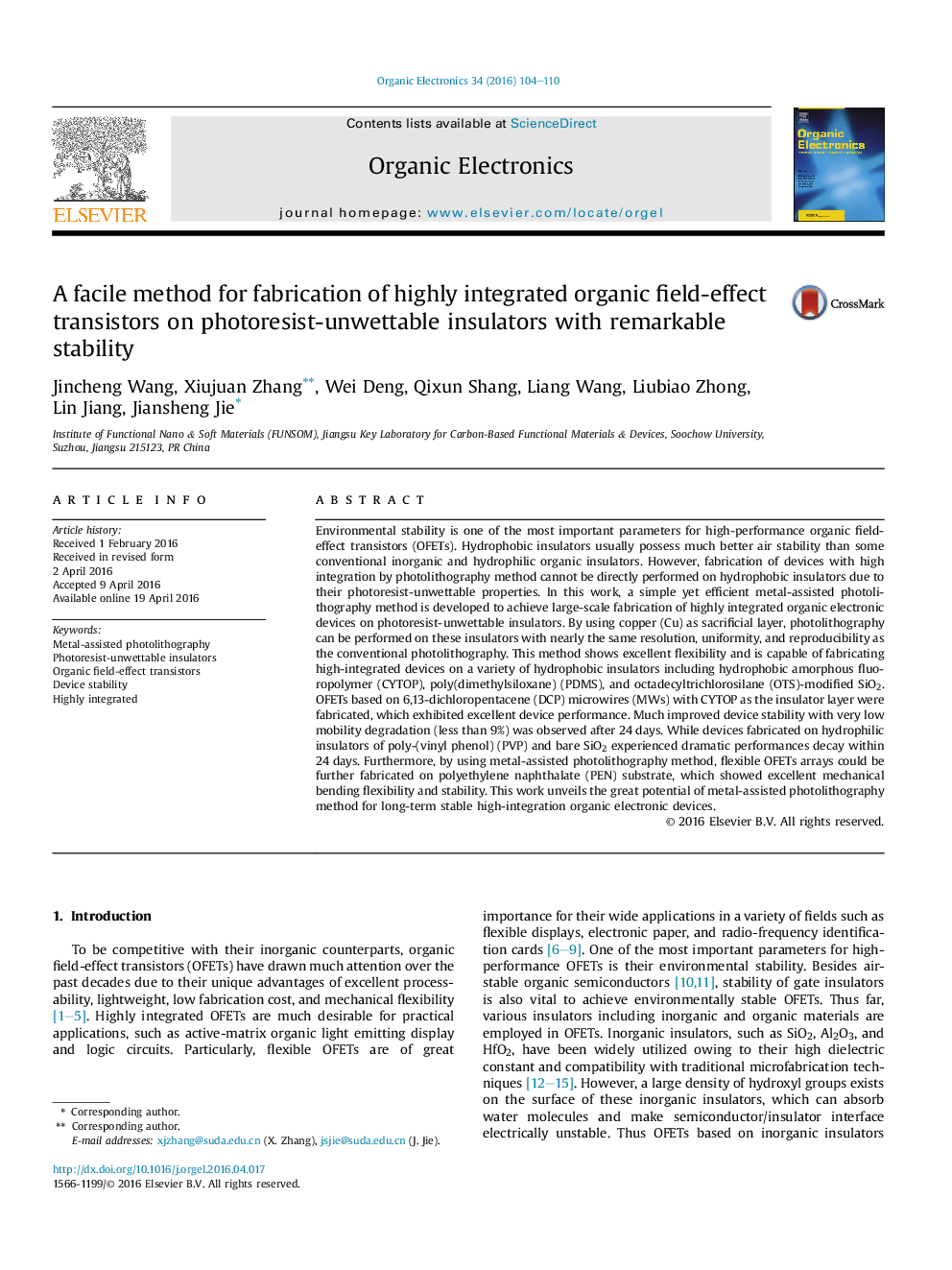| Article ID | Journal | Published Year | Pages | File Type |
|---|---|---|---|---|
| 1266906 | Organic Electronics | 2016 | 7 Pages |
•A metal-assisted photolithography method achieved highly integrated organic devices on photoresist-unwettable insulators.•This method could be applied to fabricate high-flexibility organic field-effect transistors (OFETs).•OFETs fabricated on the photoresist-unwettable insulators exhibited remarkably improved device stability in air.
Environmental stability is one of the most important parameters for high-performance organic field-effect transistors (OFETs). Hydrophobic insulators usually possess much better air stability than some conventional inorganic and hydrophilic organic insulators. However, fabrication of devices with high integration by photolithography method cannot be directly performed on hydrophobic insulators due to their photoresist-unwettable properties. In this work, a simple yet efficient metal-assisted photolithography method is developed to achieve large-scale fabrication of highly integrated organic electronic devices on photoresist-unwettable insulators. By using copper (Cu) as sacrificial layer, photolithography can be performed on these insulators with nearly the same resolution, uniformity, and reproducibility as the conventional photolithography. This method shows excellent flexibility and is capable of fabricating high-integrated devices on a variety of hydrophobic insulators including hydrophobic amorphous fluoropolymer (CYTOP), poly(dimethylsiloxane) (PDMS), and octadecyltrichlorosilane (OTS)-modified SiO2. OFETs based on 6,13-dichloropentacene (DCP) microwires (MWs) with CYTOP as the insulator layer were fabricated, which exhibited excellent device performance. Much improved device stability with very low mobility degradation (less than 9%) was observed after 24 days. While devices fabricated on hydrophilic insulators of poly-(vinyl phenol) (PVP) and bare SiO2 experienced dramatic performances decay within 24 days. Furthermore, by using metal-assisted photolithography method, flexible OFETs arrays could be further fabricated on polyethylene naphthalate (PEN) substrate, which showed excellent mechanical bending flexibility and stability. This work unveils the great potential of metal-assisted photolithography method for long-term stable high-integration organic electronic devices.
Graphical abstractFigure optionsDownload full-size imageDownload as PowerPoint slide
